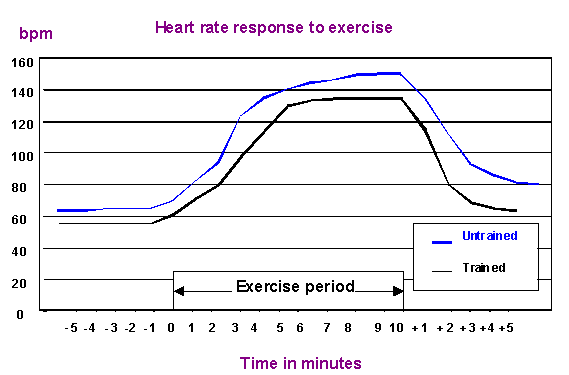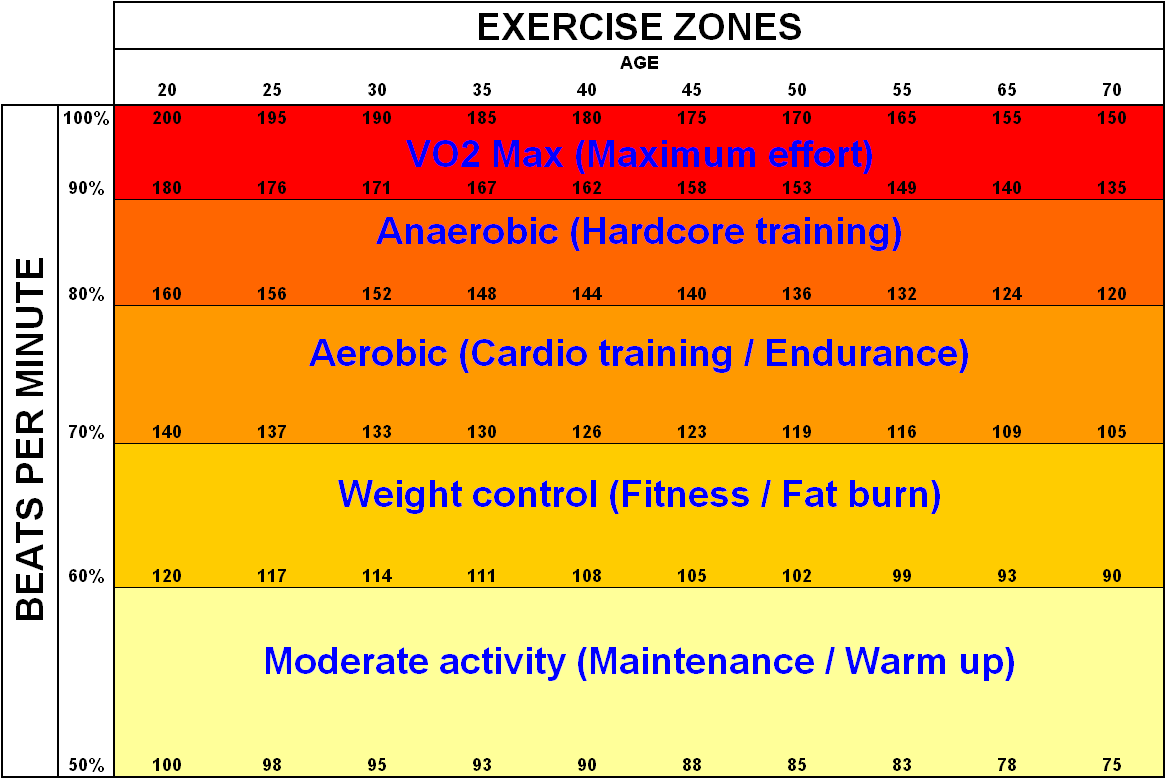What is cardio training?
Cardio training is exercise with the purpose of developing cardiovascular or aerobic fitness. Cardiovascular fitness is a good measure of the heart’s ability to pump oxygen-rich blood to the muscles.
Cardio training generally involves exercising at a constant moderate level of intensity, for a specified duration, during which the cardiovascular system is allowed to replenish oxygen to working muscles. Typical activities include walking, jogging, cycling, swimming, jump rope, stair climbing, and rowing.
Why is cardio training so important?
Cardio training plays a vital role in human health and performance. With regular cardio training, one can expect numerous metabolic changes.
These include:
- Increased cardiac output
- Increased oxygen uptake
- Increased blood flow to active muscles
- Decreased sub-maximal respiratory rate
- Increased blood volume
- Improved thermoregulation
- Increased mitochondrial size and density
- Increased oxidative enzyme concentrations
- Increased capillarization in muscle bed
- Lower rate of all-cause mortality
- Lower rate of cardiovascular disease
- Lower incidence of type 2 diabetes
- Lower rate of total body fat
- Lower rate of colon cancer
- Lower rate of breast cancer
- Lower rate of osteoporosis
Introducing just a small amount of regular cardio training can greatly improve health (see chart above right: health benefit increases as baseline activity status increases).
What you should know
Just as with strength training, cardio training requires proper progression, variation, specificity, and overload if beneficial adaptations are to occur.
When looking at how to design an effective cardio training program, consider the following variables:
- Mode
- Frequency
- Duration
- Intensity
1. Mode
You can alter the mode of exercise to your liking and/or ability. The following activities (among others) can be used for cardio training: swimming, rope skipping, jogging, cycling, cross country skiing, stair climbing, elliptical trainer, dancing, and rowing. When choosing your activity, consider the activities you enjoy, your skill level, your joint health and the surrounding climate.
2. Frequency
Frequency is the number of cardio training sessions performed per day or per week. This will be dependent on training status and intensity. 2 to 5 sessions per week will suffice. This depends on concurrent training — in other words, what other activities and/or sports you’re doing. You can attain health benefits by expending as little as 150 calories per day via cardio training. 20 minutes of cardio training, 3 times per week can maintain cardiovascular fitness levels (assuming the intensity is appropriate).
3. Duration
Duration is the length of the cardio training session. This is directly related to the exercise intensity. Strive for 15 to 60 minutes of continuous cardio training.
4. Intensity
Intensity of the cardio training can be monitored via heart rate response or oxygen uptake. The most practical method is measuring heart rate using a heart rate monitor or a simple pulse count. To attain optimal cardiovascular fitness, exercise between 60-90% of maximal heart rate (50-85% of heart rate reserve).
Remember that heart rate increases in a linear fashion as workload increases during cardio training. The maximal level that can be attained is dependent on fitness level, age, climate, gender, medications, etc.
Maximal heart rate can be estimated by subtracting age from 220. For example, the estimated maximal heart rate for a 37 year old would be:
220 – 37 (age in years) = 183 beats/minute
Target heart rate calculator here:
http://www.exrx.net/Calculators/TargetHeartRate.html
A more specific equation for determining the heart rate at which you would exercise is the Karvonen Method. This equation is as follows:
220 – age = maximum heart rate
Maximum heart rate – resting heart rate = heart rate reserve
(Heart rate reserve x training %) + resting heart rate

Chart that illustrates level of exercise intensity and fitness benefit:

For extra credit
Cardio training can be helpful for achieving optimal body composition because of the high caloric expenditures. It helps to lower relative percentage of body fat, but has little or no effect on muscle mass.
Cardio training tends to elicit a greater cortisol response than strength training.
High levels of cardio training are associated with protein loss from muscle, which can lead to a reduction in mass and strength. If you’re training for something that involves maximal strength and/or mass, consider keeping your cardio sessions relatively brief and less frequent.
Doing a high level of cardio training can result in a muscle fiber type shift from fast twitch to slow twitch. This would be undesirable for power athletes, sprinters, and Olympic lifters. However, this fiber type shift could be beneficial for recreational exercisers and endurance athletes.
Performing regular moderate cardio training can increase glucose and amino acid uptake in muscle and liver cells. This can be extremely beneficial for long term health. It can also greatly influence recovery from strength training.
Summary and recommendations
After you have established the total amount of time you can dedicate to exercise, set aside less than half of that time for cardio training. For example, if you are exercising 5 hours per week, then about 2.5 hours or less could be devoted toward cardio training.
When your goal is to put on muscle mass while controlling body fat
- Perform 10 – 15 minutes of cardio training at a low to moderate intensity after strength training workouts
- Days off from strength training should consist of recovery, high intensity interval training, dynamic flexibility/yoga, or another bout of low to moderate cardio training for 20 to 30 minutes.
When your goal is to lose body fat and maintain muscle mass
- Perform 15 – 30 minutes of cardio training at a low to moderate intensity after strength training workouts
- Days off from strength training could consist of recovery, high intensity interval training, dynamic flexibility/yoga, or another bout of low to moderate cardio training for 20 to 30 minutes.
References
Click here to view the information sources referenced in this article.
Learn more
Want to get in the best shape of your life, and stay that way for good? Check out the following 5-day body transformation courses.
The best part? They're totally free.
To check out the free courses, just click one of the links below.




Share